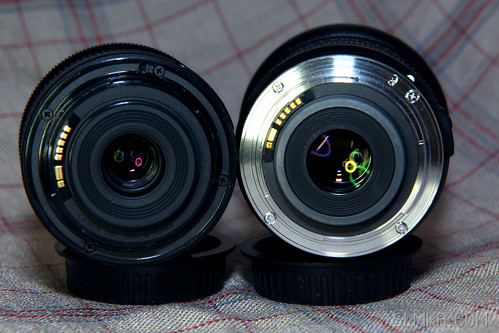Cost much less than the 10-22mm (USD$649 vs USD $300). I believe many 10-22mm owners will have the same doubts how good is the new 10-18mm compare to the 10-22mm.
* This is not a professional review and it is base on my shooting experience and requirements. Please feel free to comment or correct me if any information are invalid.
Lets starts off with some difference of both lens
- Size
The 10-18mm is much smaller, and lighter as well. At 240g, it it almost 30% lighter than the 10-22mm. If you have use the 18-55mm kit before, it feels almost the same.
- Filter
The 10-18mm uses 67mm thread. A slight problem for me since my other two main lens (EF 70-200mm F2.8 IS II, EF-S 17-55mm F2.8 IS) are 77mm, so does 10-22mm as well. Which means I will have to carry more spare lens cap from now on.
- Image Stabilizer
One main difference the 10-18mm comes with IS (Image Stabilizer), which gives you up to 4-stops. We will discuss more about this on a next review.
- Mount
The 10-18mm have a plastic mount while 10-22mm is metal. Not really a big deal as the 10-18mm is pretty light weight.
- Zoom
The 10-18mm extends out during zoom. While the 10-22mm is a IF (internal focus) design. Personally IF is my preference as it reduce the amount of dust could be sucked in and easier to mount a rain coat on the camera if it is necessary.
- Focus
The 10-18mm uses Canon’s new STM (Stepping Motor) technologies which provides smoother zoom and continue focus (video) on newer Canon DSLR’s. While the 10-22mm uses USM (Ultrasonic motor) but it provides FTM (Full Time Manual) and have also provides a focus window.
The front element of both lens does not rotate, so mounting of CPL or other filters is not an issue.
- Conclusion
The EF-S 10-18mm is a really small and light weight lens, its budget price will sure attract many to own one, especially with the IS. But for current owners of EF-S 10-22mm, it may be a tough choice. I will cover the hands on part of the lens on my next review.







No comments:
Post a Comment